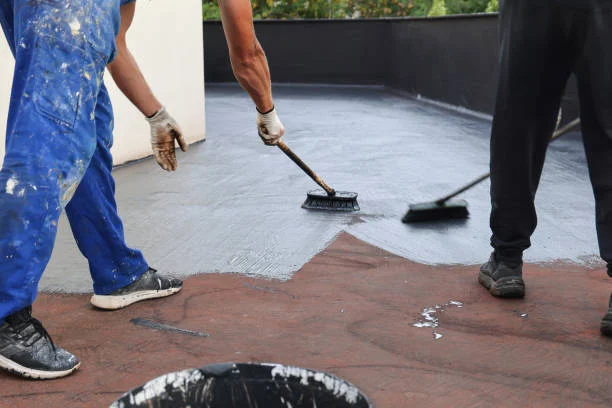Home waterproofing offers permanent solutions to address leaky basements and crawl spaces, preventing water intrusion. Its components include interior drainage systems, sump pits with battery backups, and biological growth treatments. Here is how advanced waterproofing service techniques can extend your home’s lifespan:
Crawl Space Encapsulation
Experts offer crawl space encapsulation to completely seal the area beneath your home, creating a dry, controlled environment. This involves covering the crawl space walls and dirt floor with a heavy-duty vapor barrier such as a polyethylene liner. The professional covers all vents and air leaks around pipes or utility lines to prevent outside air and moisture from entering. They may add rigid foamboards for wall insulation to help maintain a consistent temperature and improve energy efficiency.
Crawl space encapsulation extends your home’s lifespan by controlling moisture. By keeping the crawl space dry, encapsulation protects wooden elements, such as floor joists and support beams, from decay and wood-rotting fungus. This maintains the structural integrity and stability of your house. Controlling humidity levels also helps prevent the soil around and beneath the foundation from shifting or causing cracks. A stable foundation contributes to better home durability.
Interior Drains
Waterproofing service professionals install interior drain systems to collect water around your foundation’s perimeter and direct it to a pit. A low-profile drain design for basements allows for water flow to the pit through self-filtering slits. This type of system is integrated with a wall liner to direct moisture into the channel. Experts provide a drainage solution for crawlspaces designed to collect water while preventing clogging in dirt environments. It features a non-woven fabric filter that allows water to pass through while filtering debris.
Interior drainages extend your home’s lifespan by preventing damage from water accumulation and managing hydrostatic pressure. This stops the deterioration of concrete and potential cracks or shifting that can lead to structural issues or collapse. Interior drains relieve hydrostatic pressure by providing a path for soil water to be removed, preventing it from accumulating against the foundation and forcing its way through walls and floors.
Sump Pump Installation
Sump systems use pumps to prevent water intrusion into your home and pressure buildup against basement walls and floors. This prevents foundation cracks and bowing walls that can compromise the stability of your home. The systems are categorized into the following:
- A/C backup system
- D/C backup system
- Dual pump system
Sump pit features such as an airtight lid to contain odors and radon, a perforated liner for drainage, and a high-water alarm can be included with any pump type to enhance safety and performance. When water fills the pit, the pump activates to discharge the liquid. D/C pumps work with the primary A/C pump to provide protection during a power failure. A dual system combines A/C pumps within the same pit. One serves as the primary pump, while the other becomes the backup.
Biological Growth Treatment
Waterproofing professionals apply specialized fungicidal coatings to treat and inhibit biological growth in basements and crawl spaces. These water-based sealants are brushed or sprayed onto bare surfaces, where their biocidal ingredients disrupt fungal cell activity and help prevent mold from returning. By stopping fungal growth and protecting treated surfaces from deterioration, fungicidal coatings help maintain the condition of building materials in moisture-prone areas.
Concrete Levelling
Concrete levelling helps protect your home by redirecting surface water away from the foundation and sealing potential entry points. This prevents water from pooling on sunken or uneven concrete surfaces. The concrete levelling process includes sealing the expansion joint, where the concrete slab meets the house foundation. A polyurethane caulk sealing prevents water from washing underneath the slab and eroding the supporting soil. The foam used in the process fills the voids beneath the slab caused by soil erosion. This stabilization prevents further soil movement and settlement that could compromise the foundation’s stability. The filling further provides support to the concrete, preventing cracks.
Use a Professional Waterproofing Service
Experts offer exterior waterproofing during new construction or remodels to create a barrier against water penetration. Foundation repair solutions, such as carbon fiber straps, wall anchors, and helical tie-backs, help stabilize and reinforce cracking basement walls. Contact a reputable foundation expert to learn more about their services.
Top pick of the day—our Management works Media delivers insight like no other.






